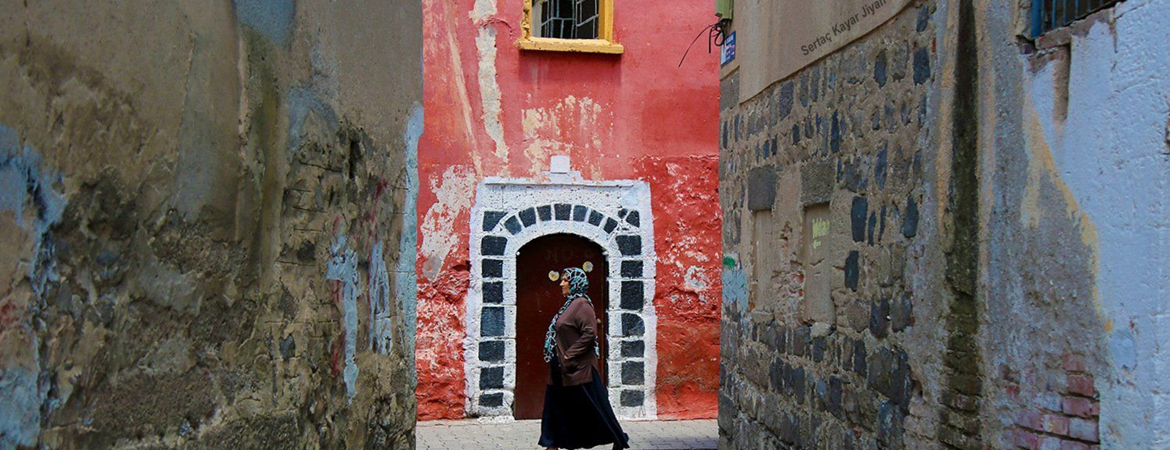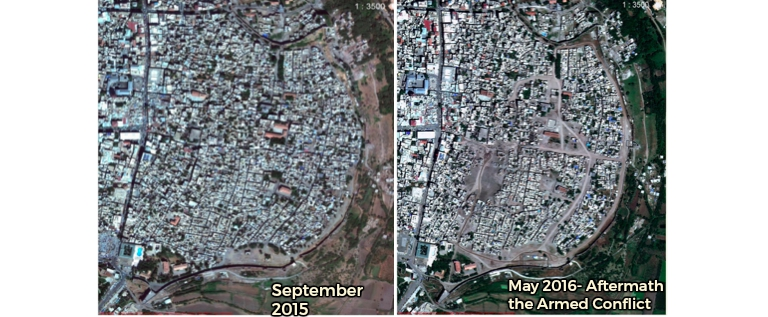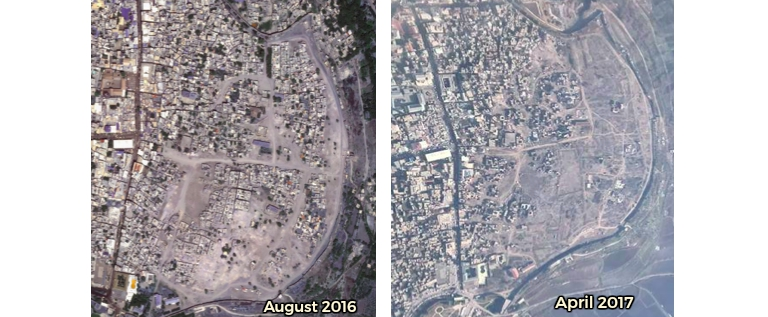
The 8000-year-old ancient Sur district in urban Diyarbakır, included in the World Heritage list by UNESCO in 2015, has been under systematic destruction by Turkish government. Sur became an armed-conflict zone between Turkish security forces and Kurdish militia and militants between December 2015 and March 2016. In this process several hundred buildings were destroyed; but the largest destruction in Sur happened after the end of armed conflicts in March 2016. So far at least 2000 buildings were demolished (around one third of the whole old city) by the government; around 180historical buildings and monuments were seriously damaged and/or destroyed, and over 20.000 people were displaced, many of who live under conditions of absolute poverty.
With a decree dated March 2016, the Turkish government decided to expropriate 82 percent of all buildings and land in the ancient Sur city. Systematic destruction of Sur accelerated after this decree. The AKP government is committed to destroying the ancient Sur City, the symbol of religious and ethnic diversity in Mesopotamia. In order to silence the voice of Sur residents, the government heavily relies on measures of emergency rule declared after the abortive coup of 15 July 2016. Property rights and the right to housing of people in Sur are incessantly violated. And national courts cannot act independently and restore these violated rights due to pressure from the government. Recently, the government also started constructing new buildings in depopulated areas in Sur, which are sold for high prices and thus change urban demography.
In this process, residents of Sur and several local NGOs have been organizing peaceful protests to protect Sur and prevent displacement, but to no avail. While various international NGOs have brought the issue to the attention of international public, the UNESCO has been waiting for the Turkish government to keep the promises it had made (Sur is supposed to be under the protection of the government) rather than taking a pro-active and decisive stance to protect Sur and prevent displacement of Sur residents.
* * *
The end of peace process between the Turkish government and the Kurdistan Workers Party (PKK) in July 2015 had grave impacts on Sur, a major site of resumed armed conflicts.Since September 2015, the government has declared round-the-clock curfews for six times in Sur. According to the Venice Commission of the Council of Europe, these “curfews” are in clear violation of the Turkish law, the Constitution, and international agreements of which Turkey is a signatory party. During these curfews several hundred people were killed, also including many civilians. In this process, Turkish army used heavy weapons like tanks in residential and historical areas, which is another clear violation of the international law. In addition to several hundred casualties, the integrity of Sur, authenticity of its streets, and numerous historical buildings and monuments were damaged or destroyed. Although the government’s “security operations” ended officially on 10 March 2016, the “curfews” and military blockades in five neighborhoods, namely Dabanoğlu, Fatih Paşa, Hasırlı, Cemal Yılmaz and Savaş, still continue, unlawfully.
Experts of the observation and control commissions of the World Heritage Site Management – situated at the Diyarbakir Metropolitan Municipality at the time – carried out examinations in affected neighborhoods and prepared three fact-finding reports. After 11 December 2015, however, the government has been denying Site Management experts’ requests to enter Sur. Since then all assessments about damages and destruction in Sur have been based on the news in local and national media, interviews and conversations with displaced people, and information and images shared by the Governor of Diyarbakir. These reports were sent to the Turkish Ministry for Culture and Tourism, Turkish National Commission for UNESCO, ICOMOS Turkish National Commission, and ICORP Turkey Commission with the requests to do detailed assessments and take measures to protect Sur in cooperation with the World Heritage Site Management. All requests of the Site Management have been denied, postponed, or remain unanswered.
Demands of “The Platform No to the Destruction of Sur”
1) The Turkish government must immediately end the curfew in Sur, stop all activities of expropriation and destruction, cancel the revision of Urban Conservation Plan, compensate the material losses of displaced people, and cover the costs for reconstructing houses for all displaced people. And a new site management should be established with the active and equal inclusion of civil society.
2) The UNESCO World Heritage Committee (WHC) must immediately send a mission to Diyarbakir to document and assess the damage and destruction on the ground. This mission should work with independent scientists from different fields and relevant civil society organizations (in addition to Turkish Ministry for Culture and Tourism and local municipalities).
3) If the Turkish government refuses the WHC’s request to send a mission, then the UNESCO should call on the UN Security Council to hold an emergency meeting and discuss the destruction of cultural heritage in Sur based on the UN Security Council Resolution 2347 (March 2017).
The international community has raised grave concerns for the protection of cultural heritage in Palmyra, Aleppo, Mosul and other ancient cities in the Middle East under conflict and destruction. While the chance of saving cultural heritage in these sites has largely depended on military success against ISIS and similar organizations on the ground, saving Sur requires political and diplomatic efforts to make the Turkish government comply with the rule of law, its own Constitution, and international agreements of which Turkey is a signatory party.
Hişyar Özsoy
Peoples’ Democratic Party Vice Co-Chair Responsible for Foreign Affairs
Member of Parliament
31 August 2017


Satellite images of destruction in Sur
